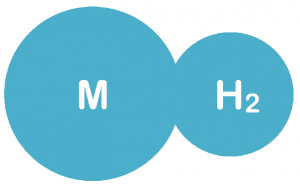As an energy carrier, hydrogen is positioned to address dwindling fossil energy and increasing environmental issues. Both wind and solar are desirable renewable energy sources to produce green hydrogen, but they are unsteady and intermittent in nature. Due to electrochemical principles, a narrow range of stack voltage is required for efficient and safe operation in the electrolysis, subject to the stack configuration. The varying voltage from wind/solar power poses a technical challenge for practical integration between renewable energy and hydrogen production. Adopting voltage-variable transformers could solve this mismatch problem. Unfortunately, the concurrent practice is to discard renewable power when the voltage is lower than the electrolysis rating, which results in a substantial waste of energy. If designing the lower-rated voltage for an electrolysis system, it risks abandoning more renewable power when the voltage is higher than the rating. Another common practice is supplementing grid power with wind/solar power to produce hydrogen, which only increases costs. Clearly, the dilemma between the varying voltage power from renewable energy and the narrow voltage rating of electrolysis systems is calling for a game-changing solution.
Micro Hydrogen’s “voltage-adaptable electrolysis” is based on a smart electrode regulation technology, which works similarly to voltage-variable transformers but is fundamentally different. Our voltage management technology is of “voltage adaptation,” as opposed to the “voltage alternation” in all transformers. The voltage adaptation is achieved by our design of a series of subunits.
Essentially, our concept transfers the formidable electrolysis challenge into a more solvable electrical control problem, in accommodation to the unsteady renewable power sources. Our solution could halve the production cost of green hydrogen, compared with existing technology powered by solar/wind energy.
Our solution was proved by a 600watt grid-independent electrolyzer with 14 electrodes. If successful in a real product, our solution could assist the USA in achieving and even accelerating the 2030 long-term strategy of clean hydrogen costs of $1/kg.
